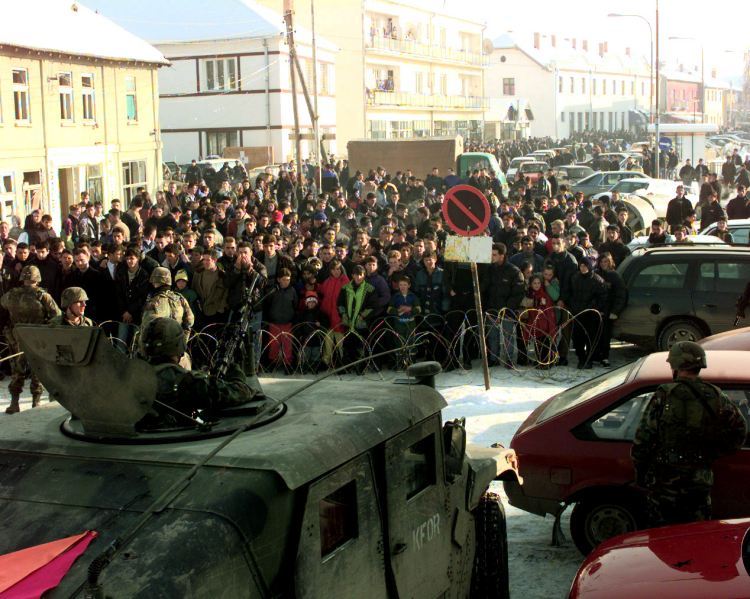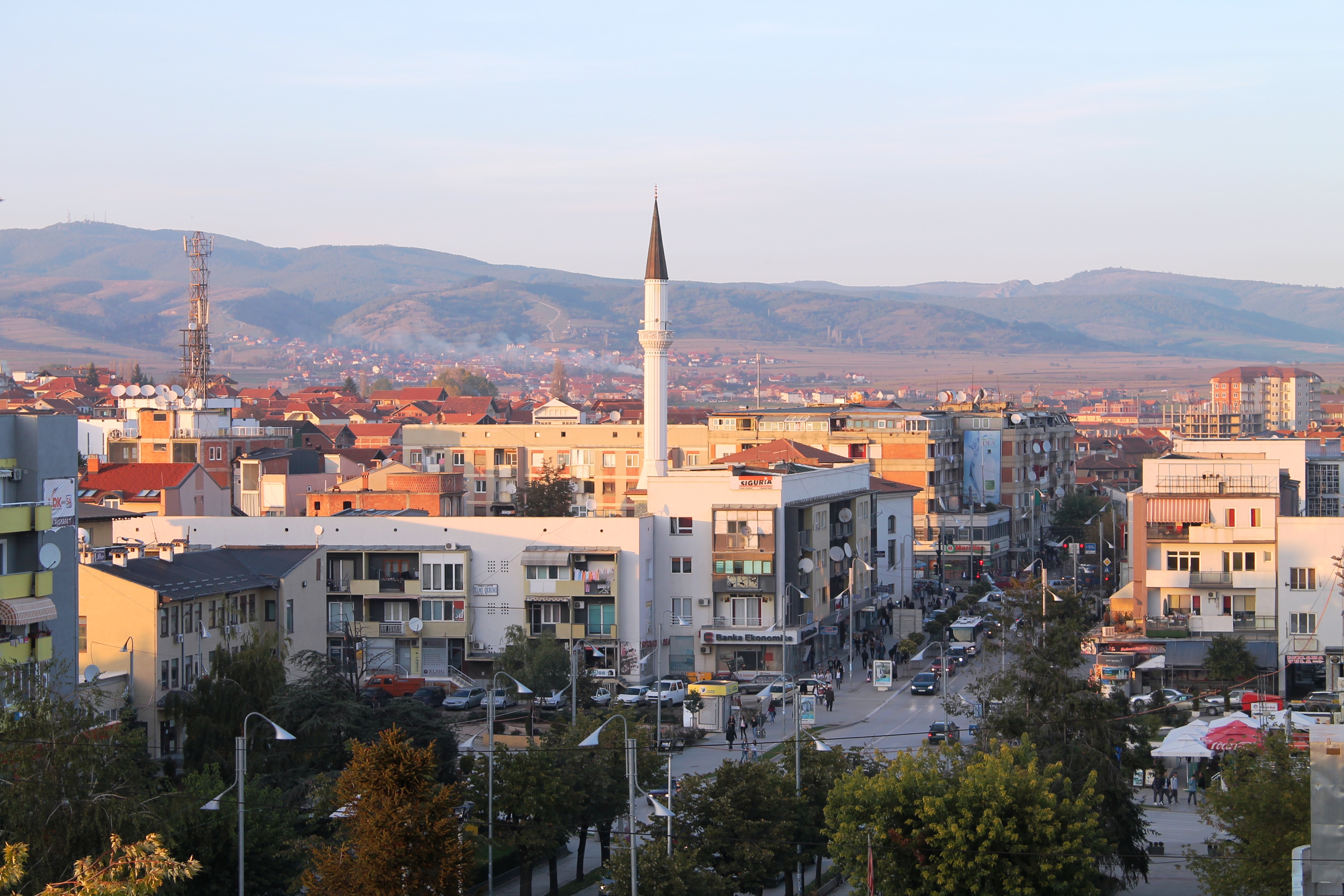|
Kabash
Kabash (, ) is a town in the Vitina Municipality of southeast Kosovo.GNS names History The ancestors of the inhabitants of the village belong to the Kabashi tribe. The Austro-Hungarian Austria-Hungary, often referred to as the Austro-Hungarian Empire,, the Dual Monarchy, or Austria, was a constitutional monarchy and great power in Central Europe between 1867 and 1918. It was formed with the Austro-Hungarian Compromise of ... consulate in Belgrade reported that during February 1913, Serbian military forces executed all Albanian inhabitants of the villages of Kabash, Tërpezë, Lubisht and Gjylekar. Geography The village is located in the Anamorava valley and is stiuated on the foot of the Karadak mountains. Notes and references Notes: References: Villages in Viti, Kosovo {{Kosovo-geo-stub ... [...More Info...] [...Related Items...] OR: [Wikipedia] [Google] [Baidu] |
Kabashi
The Kabashi (the definite form of Kabash) are an Albanian tribe, or ''fis'', from the Pukë region. It is considered part of the "seven tribes of Puka" (Albanian: shtatë bajrakët e Pukës) that inhabit the region. Durham said of them: "Puka group ... sometimes reckoned a large tribe of seven bairaks. Sometimes as a group of tribes". Geography Kabashi tribal territory is situated on the left (southern) side of the Drin River. Kabashi territory borders the Qerreti and Puka tribes to the west, the Berisha tribe to the north, the Spaçi tribe of Mirdita to the south, the Thaçi tribe to the east and the Dushmani tribe to the northwest, across the Drin River. Kabashi tribal territory is centred on the Gomina river basin, which flows into the Drin, and the Kabashi settlements consist of Qelëza, Kabash, Bushat, Dedaj, Micoj, Ukth, Kryezi and Meçja. Origins and history The traces of the term 'Kabashi' can be found in Stratioti documents as ''Cabassi'' or ''Cambassi'' in 1530 ... [...More Info...] [...Related Items...] OR: [Wikipedia] [Google] [Baidu] |
Vitina Municipality
Viti ( sq-definite, Vitia) or Vitina ( sr-Cyrl, Витина), is a town and municipality located in the District of Gjilan in Kosovo. According to the 2011 census, the town of Viti has 4,924 inhabitants, while the municipality has 46,987 inhabitants. Municipality * Ballancë/Balance * Beguncë/Begunce * Binça/Binač * Budrikë e Epërme/Gornja Budrika * Buzovik * Çifllak/Čiflak * Dëbëlldeh/ Debelde * Devajë/Devaja * Drobesh/Drobeš * Gërmovë/Grmovo * Gjylekar/ Đelekare * Goden i Madh/Veliki Goden * Gushicë/Gušica * Kabash/Kabaš * Letnicë/Letnica * Lubishtë/ Ljubište * Mjak/Mijak * Novosellë/Novo Selo * Podgorc/Podgorce * Pozharan/Požaranje * Radivojc/Radivojce * Ramjan/Donje Ramnjane * Ramnishtë/Ravnište * Remnik/Ribnik * Sadovinë e Çerkezëve/Čerkez Sadovina * Sadovinë e Jerlive/Jerli Sadovina * Shasharë/Šašare * Sllatinë e Epërme/Gornja Slatina * Sllatinë e Poshtme/Donja Slatina * Smirë/ Smira * Stubëll e Epërme/Gornja Stubla * Stubëll e ... [...More Info...] [...Related Items...] OR: [Wikipedia] [Google] [Baidu] |
District Of Gjilan
The District of Gjilan ( sq, Rajoni i Gjilanit) is one of the seven districts (the higher-level administrative divisions) of Kosovo. Its seat is in the city of Gjilan. History Anamorava, literally "side of river of Morava", is the hilly countryside in south eastern Kosovo south of Gjilan and on the Binačka Morava. It stretches eastward to the Preševo (Presheva) valley in southern Serbia. The mountains in this region rise to an altitude of 1,000 to 1,200 meters, and culminate in the Karadak region bordering neighboring North Macedonia north of Skopje. Municipalities The district of Gjilan has a total of 6 municipalities and 287 other smaller settlements: Ethnic groups In 1991, all municipalities of the district had an Albanian majority: Gjilan (Gnjilane) (76.54%), Kamenica (Dardana) (73.05%), Vitina (Vitia) (78.68%). In the 2011 census, after the creation of new municipalities with Serb population, Albanians are the majority in: Gjilan (Gnjilane) (97.4%), Kamenica ( ... [...More Info...] [...Related Items...] OR: [Wikipedia] [Google] [Baidu] |
Municipalities Of Kosovo
A municipality ( sq, komuna, sr, / ) is the basic administrative division in Kosovo and constitutes the only level of power in local governance. There are 38 municipalities in Kosovo; 27 of which have an Albanian ethnic majority, 10 Serb and 1 Turkish. After the 2013 Brussels Agreement, signed by the governments of Kosovo and Serbia, an agreement was made to create a Community of Serb Municipalities, which would operate within Kosovo's legal framework. Since 2013, the agreement has not been fulfilled by Kosovo's authorities, calling upon its constitution and "territorial integrity". Serbia does not recognize Kosovo as a sovereign state, but as an autonomous province according to its constitution. List of Municipalities Powers of municipalities All municipalities have the following competences, as regulated by Law Nr. 03/L-040 of the Constitution of Kosovo: # Local economic development. # Urban and rural planning. # Land use and development. # Implementation of building ... [...More Info...] [...Related Items...] OR: [Wikipedia] [Google] [Baidu] |
Central European Time
Central European Time (CET) is a standard time which is 1 hour ahead of Coordinated Universal Time (UTC). The time offset from UTC can be written as UTC+01:00. It is used in most parts of Europe and in a few North African countries. CET is also known as Middle European Time (MET, German: MEZ) and by colloquial names such as Amsterdam Time, Berlin Time, Brussels Time, Madrid Time, Paris Time, Rome Time, Warsaw Time or even Romance Standard Time (RST). The 15th meridian east is the central axis for UTC+01:00 in the world system of time zones. As of 2011, all member states of the European Union observe summer time (daylight saving time), from the last Sunday in March to the last Sunday in October. States within the CET area switch to Central European Summer Time (CEST, UTC+02:00) for the summer. In Africa, UTC+01:00 is called West Africa Time (WAT), where it is used by several countries, year round. Algeria, Morocco, and Tunisia also refer to it as ''Central European ... [...More Info...] [...Related Items...] OR: [Wikipedia] [Google] [Baidu] |
Central European Summer Time
Central European Summer Time (CEST), sometimes referred to as Central European Daylight Time (CEDT), is the standard clock time observed during the period of summer daylight-saving in those European countries which observe Central European Time (CET; UTC+01:00) during the other part of the year. It corresponds to UTC+02:00, which makes it the same as Eastern European Time, Central Africa Time, South African Standard Time, Egypt Standard Time and Kaliningrad Time in Russia. Names Other names which have been applied to Central European Summer Time are Middle European Summer Time (MEST), Central European Daylight Saving Time (CEDT), and Bravo Time (after the second letter of the NATO phonetic alphabet). Period of observation Since 1996, European Summer Time has been observed between 01:00 UTC (02:00 CET and 03:00 CEST) on the last Sunday of March, and 01:00 UTC on the last Sunday of October; previously the rules were not uniform across the European Union. There were proposals ... [...More Info...] [...Related Items...] OR: [Wikipedia] [Google] [Baidu] |
Kosovo
Kosovo ( sq, Kosova or ; sr-Cyrl, Косово ), officially the Republic of Kosovo ( sq, Republika e Kosovës, links=no; sr, Република Косово, Republika Kosovo, links=no), is a partially recognised state in Southeast Europe. It lies at the centre of the Balkans. Kosovo unilaterally declared its independence from Serbia on 17 February 2008, and has since gained diplomatic recognition as a sovereign state by 101 member states of the United Nations. It is bordered by Serbia to the north and east, North Macedonia to the southeast, Albania to the southwest, and Montenegro to the west. Most of central Kosovo is dominated by the vast plains and fields of Dukagjini and Kosovo field. The Accursed Mountains and Šar Mountains rise in the southwest and southeast, respectively. Its capital and largest city is Pristina. In classical antiquity, the central tribe which emerged in the territory of Kosovo were Dardani, who formed an independent polity known as th ... [...More Info...] [...Related Items...] OR: [Wikipedia] [Google] [Baidu] |
Austria-Hungary
Austria-Hungary, often referred to as the Austro-Hungarian Empire,, the Dual Monarchy, or Austria, was a constitutional monarchy and great power in Central Europe between 1867 and 1918. It was formed with the Austro-Hungarian Compromise of 1867 in the aftermath of the Austro-Prussian War and was dissolved shortly after its defeat in the First World War. Austria-Hungary was ruled by the House of Habsburg and constituted the last phase in the constitutional evolution of the Habsburg monarchy. It was a multinational state and one of Europe's major powers at the time. Austria-Hungary was geographically the second-largest country in Europe after the Russian Empire, at and the third-most populous (after Russia and the German Empire). The Empire built up the fourth-largest machine building industry in the world, after the United States, Germany and the United Kingdom. Austria-Hungary also became the world's third-largest manufacturer and exporter of electric home appliances, ... [...More Info...] [...Related Items...] OR: [Wikipedia] [Google] [Baidu] |
Kosovo Pomoravlje
Anamorava ( sq, Anamoravë) or Kosovo Pomoravlje ( sr, Косовско Поморавље / ''Kosovsko Pomoravlje'', " Pomoravlje of Kosovo"), is a valley in the Republic of Kosovo, in the southern part of the District of Gjilan surrounding the Morava e Binçës River. It stretches eastward to the Preševo Valley in southern Serbia. The mountains in this region, rising to an altitude of , border the Karadak region in north of Skopje. Gjilan, Kamenica, Novobërdë and Viti are municipalities located in the region. The region gave its name to Kosovo-Pomoravlje District, which largely corresponds to its successor District of Gjilan in the Republic of Kosovo. It is known for recording the lowest temperature in Kosovo: , on 25 January 1963. Name The region is known as ''Kosovsko Pomoravlje'' (, "Morava Valley of Kosovo") in Serbian and as ' ("Valley of Binač Morava") in Albanian. Its name is derived from the Binačka Morava (Morava e Binçës) River, which flows through no ... [...More Info...] [...Related Items...] OR: [Wikipedia] [Google] [Baidu] |
Skopska Crna Gora
tr, Karadağ, italics=no , photo = Skopska Crna Gora-MKD.JPG , photo_caption = , photo_size = 250 , highest = Ramno , elevation_m = 1651 , elevation_ref = , prominence_m = , prominence_ref = , listing = , location = North Macedonia, Kosovo and Serbia , range = , map = Macedonia , label_position = right , map_size = 250 , coordinates = , coordinates_ref = , map_caption = Location of the mountain within North Macedonia , range_coordinates = , type = , age = , first_ascent = , easiest_route = , native_name = Skopska Crna Gora ( Macedonian and Serbian Cyrillic: Скопска Црна Гора, ; Albanian: ''Malësia e Karadakut''), often called simply Crna Gora (Macedonian and Serbian Cyrillic: Црна Гора; Albanian: ''Mali i Zi''), is a mountain range and ethnographic region in North Macedonia, Kosovo and Serbia. The highest peak is Ramno in Macedonia. The largest town on the mountain is Kučevište in North Macedonia. Name Skopska C ... [...More Info...] [...Related Items...] OR: [Wikipedia] [Google] [Baidu] |


